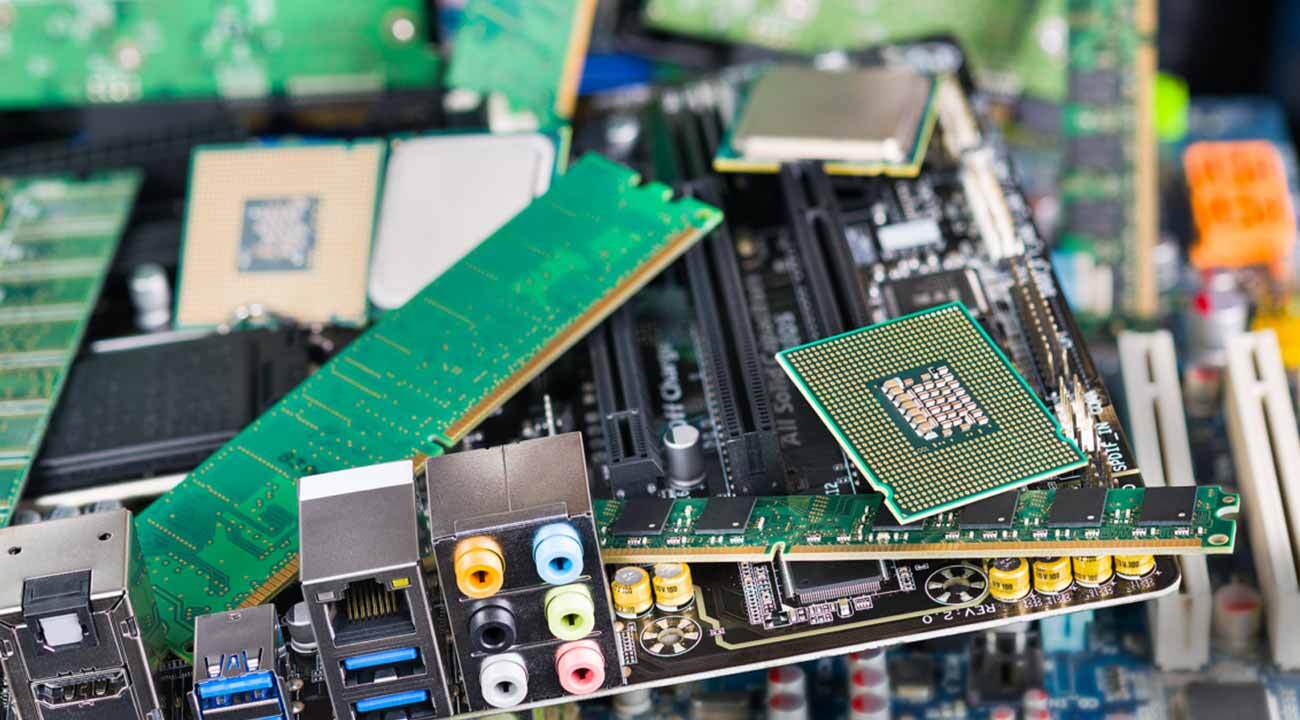Printed circuit boards (PCBs) are an essential part of electronic systems and are commonly utilized in consumer electronics, medical devices, and military applications. With recent innovations, more cost-effective and higher-quality electronic devices are available, leading to quicker obsolescence of products and the concern of how to safely discard the increasing amount of discarded PCBs and the hazardous materials they contain. Not only is it important to find environmentally-friendly strategies for managing electronic waste, but also to efficiently reclaim precious and irreplaceable resources.
PCBs (printed circuit boards) are composed of valuable metals, base metals, and dangerous chemicals with the potential to cause permanent harm to the environment and human health. For example, the lead present in PCBs accumulates in the environment, adversely affecting organisms, animals, humans, and plants. Re-utilizing and recovering products that have been produced from PCBs can help to preserve finite natural resources and safeguard the environment.
Prospects
Waste printed circuit boards (PCB) recycling has become an important area of recycling due to the prevalence of e-waste. As technology advances, more and more electronics are being discarded and as a result, PCB waste is also increasing. However, PCB recycling offers a viable solution to reduce the number of hazardous materials in the environment.
The prospects of the Waste PCB recycling process are highly promising. The recycling process is designed to extract valuable metals and components from PCB components for reuse. By recovering these metals, the process helps to cut down on the waste generated from electronic products and keeps those materials out of landfills. The main steps of the process involve mechanical disassembly, manual separation, classification, chemical treatment, and disposal of hazardous materials. During the mechanical disassembly process, components such as capacitors, resistors, and other small components are separated from the PCB and sorted for reuse. After those components have been removed, the PCB itself is subjected to a chemical and mechanical process that separates the plastic, metal, and ceramic materials, leading to the manual separation of various components.
Classification is usually performed manually or computer-aided. Manual classification involves sorting the components according to their shape, size, and other characteristics. Computer-aided classification, on the other hand, involves sorting components based on certain predefined criteria. After this process, the components are sent to a chemical treatment plant where they are treated with chemical agents to remove any hazardous materials present.
The disposal of hazardous materials is the final step of the PCB recycling process. This involves disposing of the materials in an ecologically friendly manner, such as in a landfill, or incinerating them for energy recovery.
The advantages of PCB recycling are numerous. Firstly, PCB recycling prevents pollution by reducing the number of hazardous materials being put into the environment. Secondly, it reduces waste by making use of existing components in a more efficient manner. Thirdly, it creates employment opportunities, as there is a growing demand for specialists in the field.
As the demand for environmental sustainability increases, the prospects of waste PCB recycling are very positive. It offers a solution to reduce the number of hazardous materials in the environment and it provides several economic and employment opportunities. Moreover, there is an increasing demand for PCB recycling services, leading to more and more businesses setting up. All these factors suggest that the waste PCB recycling industry has a promising future.
Challenges
The proper recycling of waste printed circuit boards (PCBs) can help to mitigate the environmental and health concerns posed by their improper disposal. While recycling PCBs presents several unique challenges, it also has tremendous potential to reduce the impacts of improper disposal. By understanding the complexities of the recycling process and implementing effective solutions, the process can be made more efficient and environmentally beneficial.
The complexity of PCB recycling stems from the fact that they contain several different elements, including glass fibers, metals, and plastic. This mixture means that each board must be carefully sorted and disassembled so that its individual components can be recycled. Furthermore, managing the hazardous materials contained in the circuit boards can be an additional challenge, as traditional recycling processes may not be suitable for these hazardous components.
Despite the complexities of PCB recycling, there are numerous advantages to be gained from properly disposing of electronics. Firstly, recycling PCBs can prevent waste from contributing to the growing issue of electronic waste, which contributes to pollution and the destruction of natural ecosystems. Additionally, proper recycling of PCBs can produce valuable metals, such as copper and gold, that can be used in the production of new electronics. This is beneficial from both an economic and an environmental standpoint, as it allows these materials to be effectively reused while avoiding the production of new materials.
As waste PCB is an alarming threat to the environment, PCB recycling has become a mandatory task regarding e-waste management. Luckily many organizations and companies are coming forward to solve this issue. In our country, JR Enterprise is among those companies who are prominent in recycling e-waste including waste PCB recycling in their services. They follow all the necessary steps to properly recycle waste PCB professionally and securely. They began operations in 2011 and have been taking environmental and personal safety very seriously, which is why they have obtained the necessary Local Certifications & No Objection Certifications (NOC) from the concerned authorities, as well as gained ISO/IEC: 27001:2013 & ISO: 14001:2015 certifications for safety measures and precautions.

Leave a Reply